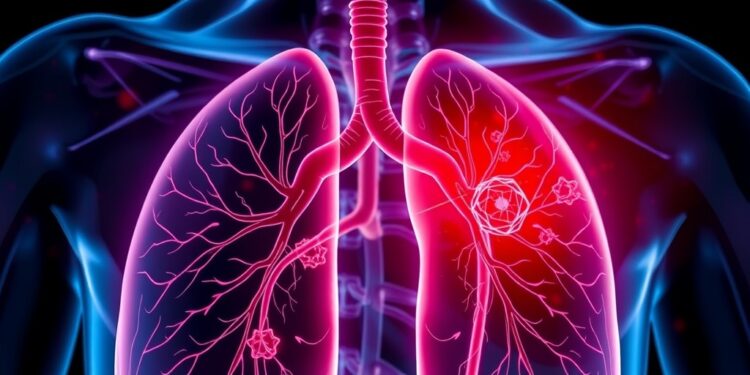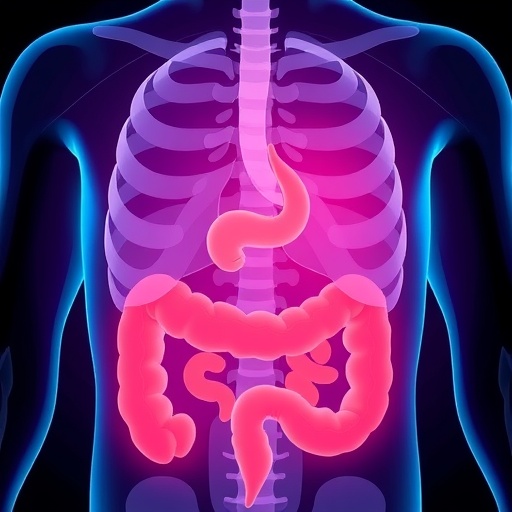
In a significant leap forward for the treatment of acute pulmonary embolism (PE), a recent study conducted in collaboration with the University Hospital Bonn (UKB) has garnered attention for uncovering crucial insights into the most effective strategies for managing high-risk cases. The research, which has been published in the esteemed journal “Intensive Care Medicine,” systematically examines the various therapeutic options available to clinicians, thereby offering potentially life-saving guidance for patients enduring this critical condition.
Acute pulmonary embolism, characterized by an obstruction in the pulmonary arteries due to blood clots, can lead to catastrophic consequences, including circulatory failure and elevated mortality rates. High-risk acute pulmonary embolism represents a particularly daunting challenge in the medical field, affecting approximately five percent of the overall pulmonary embolism population. Alarmingly, this condition can manifest even in otherwise healthy young individuals, emphasizing the urgent need for effective treatment modalities.
The study, one of the largest of its kind globally, involved a comprehensive analysis across 34 European medical centers and included over 1,060 patients. This extensive collaboration underscores the complexity of treating high-risk acute pulmonary embolism and the necessity for a concerted, multi-institutional effort to accumulate meaningful data.
The primary focus of the research was to determine which treatment options yield the most favorable outcomes in terms of mortality rates among patients with this high-risk affliction. According to the study’s lead author, Prof. Dr. Dr. Enzo Lüsebrink, a cardiologist at the UKB Heart Center, the results indicate a clear advantage for targeted recanalization techniques. These methods include intrahospital systemic thrombolysis, surgical thrombectomy, and percutaneous catheter-directed treatment. Each of these approaches demonstrated superiority over traditional circulatory support measures such as venoarterial extracorporeal membrane oxygenation (VA-ECMO) when utilized independently.
The comparative mortality rates among the various treatment methodologies highlight these findings’ implications. The study revealed a stark contrast in survival outcomes: 57 percent of patients reliant on VA-ECMO alone succumbed to their condition. In contrast, those undergoing intrahospital systemic thrombolysis exhibited a mortality rate of 48 percent, while percutaneous catheter-directed treatment showed a significant reduction to 43 percent. Most notably, the surgical thrombectomy group achieved the most promising results, with a mortality rate of only 34 percent.
Employing advanced statistical methodologies, including a “target trial analysis,” the researchers ensured the robustness of their conclusions. Such rigorous statistical approaches not only included traditional models but also incorporated machine learning techniques, providing a modern framework for analyzing the efficacy of various treatments. This level of detail is crucial, given the inherent challenges and limitations associated with conducting randomized controlled trials within the scope of acute pulmonary embolism treatment.
Experts in the field, including Prof. Dr. Holger Thiele from the Heart Center Leipzig, underscored the study’s relevance in shaping clinical practices. With the complexities surrounding high-risk acute pulmonary embolism care, the collaborative effort offers a rich repository of data that can inform treatment guidelines and direct future research efforts. This comprehensive analysis stands as a pivotal reference for clinicians seeking to navigate the treacherous landscape of managing such high-risk patients.
The coordination involved in this international study extended beyond mere data collection; it necessitated a high level of logistical orchestration among the participating centers, a task that was met with commendable diligence. The collaborative spirit exhibited across Europe serves as a testament to the importance of teamwork in advancing medical knowledge and improving patient outcomes.
As a result of the findings, the potential to influence future clinical practices is profound. Dr. Lüsebrink emphasized the study’s anticipated impact on upcoming healthcare guidelines. The insights gleaned from their extensive clinical analysis are expected to encourage a paradigm shift in the management of high-risk acute pulmonary embolism, reinforcing the need to evaluate and possibly restructure current treatment protocols.
The implications extend beyond immediate clinical application, as the research presents a salient argument for developing new therapeutic strategies and interventions for high-risk patients. In a landscape where instant access to information is paramount, the article’s publication seeks to enlighten and guide healthcare professionals seeking to optimize patient care in this critical area.
In terms of future directions, the researchers advocate for ongoing exploration into the synergistic effects of combining these treatment methodologies. Investigating how various therapeutic approaches may complement one another could lead to even more effective protocols and techniques that further lower mortality rates in this patient demographic.
In summary, this landmark study lays an essential groundwork for the future of acute pulmonary embolism treatment, heralding a new era where data-driven approaches and collaborative efforts will potentially save lives and improve patient care. As healthcare continues to evolve, these findings represent a glimmer of hope for those grappling with the deadly implications of high-risk acute pulmonary embolism.
Subject of Research: High-risk acute pulmonary embolism treatment strategies
Article Title: Management of high-risk acute pulmonary embolism: an emulated target trial analysis
News Publication Date: 25-Feb-2025
Web References: Journal Link
References: N/A
Image Credits: N/A
Keywords: Acute pulmonary embolism, treatment strategies, thrombolysis, surgical thrombectomy, VA-ECMO, circulatory support, clinical guidelines, cardiovascular research, machine learning, patient outcomes, mortality rates.
Tags: acute pulmonary embolism therapeutic optionschallenges in treating high-risk PEcirculatory failure and pulmonary embolismcomprehensive analysis of PE treatmentsdata from European medical centerseffective strategies for PE managementhigh-risk acute pulmonary embolism treatmentsIntensive Care Medicine publicationlife-saving guidance for PE patientsmortality rates in pulmonary embolismmulticenter study on pulmonary embolismUniversity Hospital Bonn research





